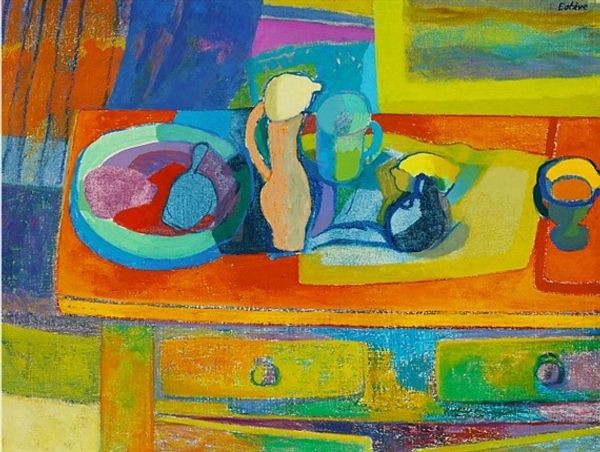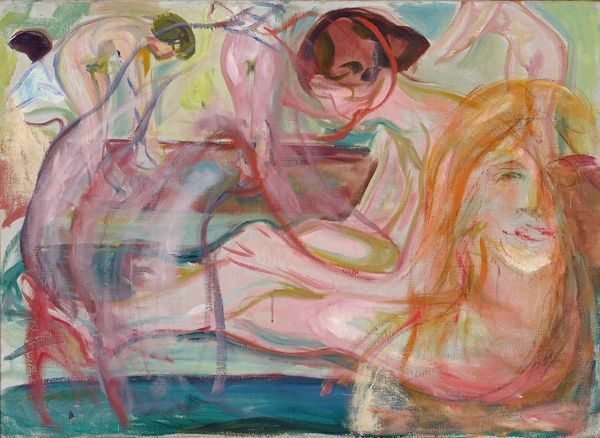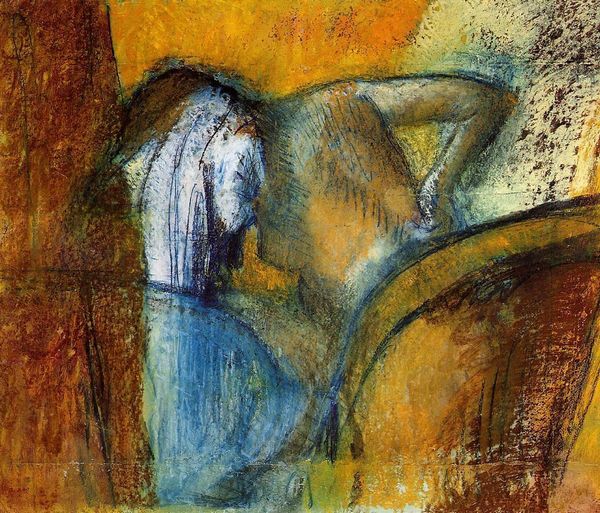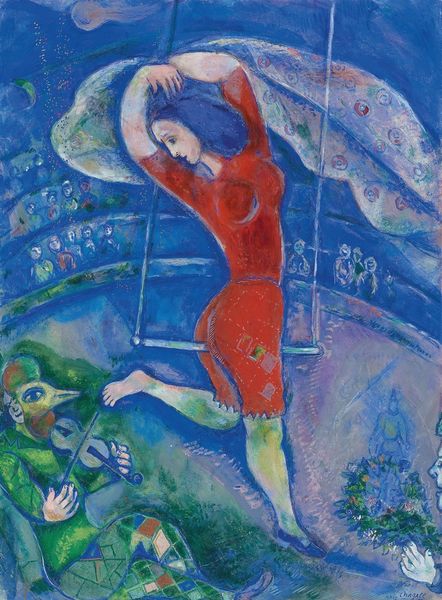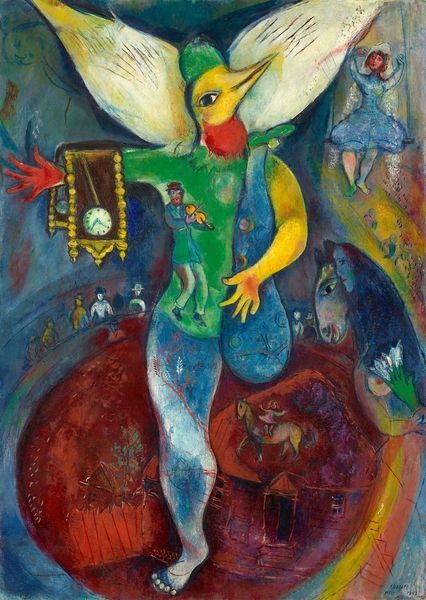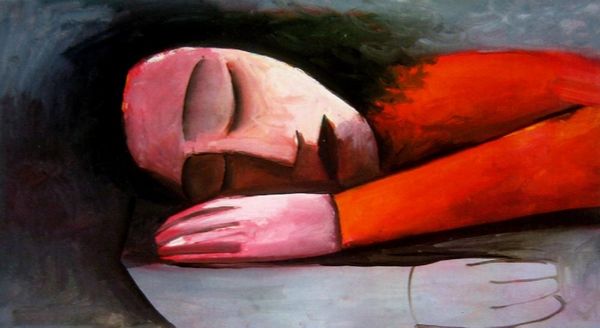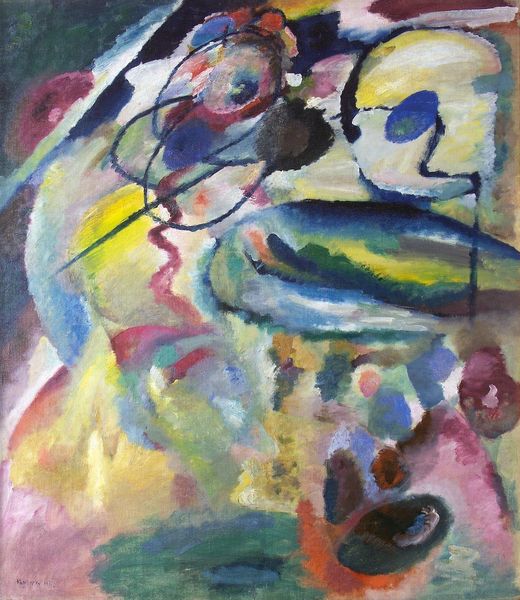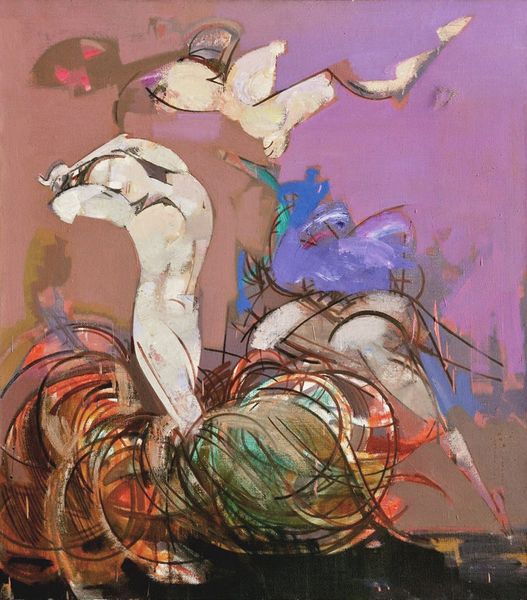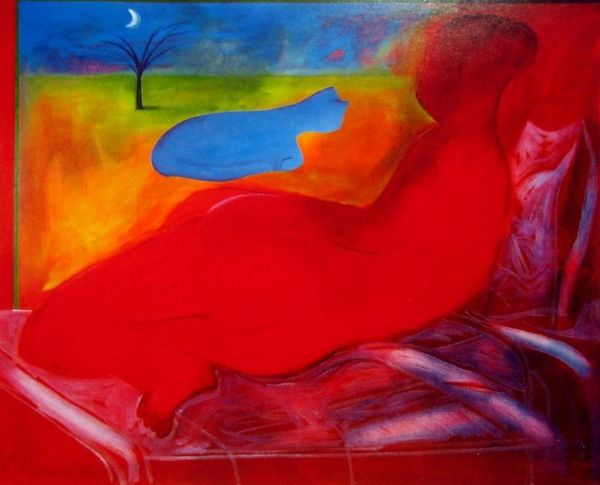
painting, acrylic-paint
#
portrait
#
painting
#
acrylic-paint
#
figuration
#
neo expressionist
#
acrylic on canvas
#
expressionism
#
facial painting
#
portrait art
#
modernism
Copyright: Charles Blackman,Fair Use
Editor: This painting is called "Sleeping Figure" and is attributed to Charles Blackman. It appears to be acrylic on canvas and it strikes me as quite dreamlike. The large head and hands in the foreground compared to the children on the shore is striking. How do you interpret this work? Curator: I see this piece as a potent commentary on the intersection of personal vulnerability and societal expectations, particularly as it relates to the female experience. Blackman, although it’s not known exactly when, places us in an ambiguous space. How does the monumental, sleeping figure in the foreground—almost fetal in posture—relate to the carefree children in the background? Editor: It’s almost as if they inhabit different worlds, even though they're in the same space. One vulnerable and one joyful. Curator: Exactly. Is the sleeping woman dreaming of this childhood? Or is her rest a form of resistance to the pressures of adulthood, a retreat from the watchful eyes of society and gender roles? Think about the placement of her hands, shielding her face—is it a gesture of protection or perhaps a sign of the silencing of female voices? It’s important to examine how art portrays this type of relationship. Editor: I see your point. By positioning the vulnerable figure so prominently, Blackman seems to be drawing attention to those often-unseen internal struggles. Curator: Precisely. And we might also consider the dreamlike quality of the piece, how it mirrors the ways societal expectations often distort or overshadow our own inner realities. It's an exploration of power, or the lack thereof, and the yearning for a space where one can simply exist, unburdened. What does this generate for you now? Editor: That adds a whole new layer of complexity! It makes me think about the different spaces women occupy, both physically and psychologically, and how these spaces can be both confining and liberating. Curator: Precisely. Art allows us to explore this relationship between the space a female has with themselves and the spaces provided for them by greater society. Hopefully, through looking we may improve the places made available.
Comments
No comments
Be the first to comment and join the conversation on the ultimate creative platform.
